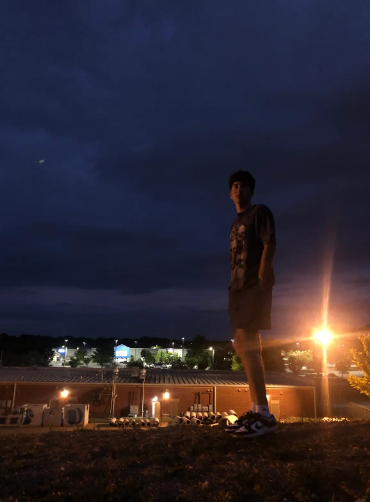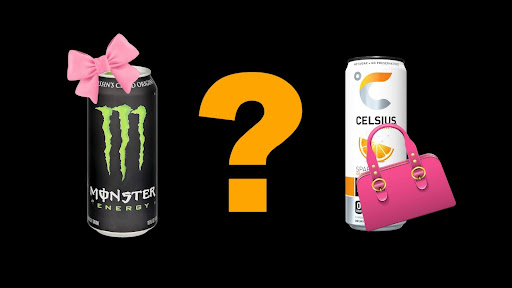High school girls are notorious for needing daily caffeine to survive a laborious school day. Monster Energy and Celsius Energy are two of the most popular energy drinks among teenage girls.
Despite high school girls sharing a common interest in consuming energy drinks, their appearances and personalities could not be more different.
Both brands have a general shared target audience of consumers aged 18 to 29. The drinks are enjoyed by those participating in athletics, gaming, events, or entertainment.
The general stereotype of a Monster Energy drink consumer tends to be edgy, alternative, goth, emo, etc. However, the Celsius Energy stereotype is more basic, sportswear, trendy, and vibrant.
Monster Energy
Although the brand Monster Beverage (formerly Hansen’s) has existed since 1935, their most iconic product “Monster Energy” released in 2002.
With it’s raw branding, Monster always attempted to appeal to more fringe groups, donning it’s cans with aggressive artwork, and sponsoring many alternative sports groups such as Esports.
With some of its most popular flavor names being “Super Sport Killer Kiwi,” “Juice Monster Mango Loco” and “Juice Monster Pipeline Punch,” Monster Energy sticks with more unorthodox branding.
In an anonymous poll conducted on the Mycenaean Instagram, some described Monster Energy-drinkers as “Weird,” “Emo,” and “Goth.” To some students, the concept of a teenage girl who drinks Monster Energy evokes images of “Sweaty, greasy, black baggy clothes with eyeshadow, black lipstick, black shoes, [and] black hair.”
What many of these poll results describe match with the concept of the “Alt Girl,” which wikiHow describes as “[A part] of an internet subculture [of] young women who wear a mixture of goth, emo, punk, indie, and e-girl aesthetics.”
Those in the Alt-girl subculture usually tend to defer from mainstream culture, wearing unique clothes, unique hair colors and styles, and listening to metal, alternative, rap, or indie music.
Tensions between Monster Energy and the tradition of parents are long-standing. In 2014, a viral video showed a woman claiming that Monster drinks “…are the work of Satan” and that the brand uses the tagline “Release the Beast” and its logo to subtly convey Satanic imagery.
Celsius Energy
Celsius Energy is known for its vast array of unique flavors, some of the most popular being the Sparkling Watermelon, Sparkling Orange and Sparkling Lemon flavors.
As it’s advertised as a more healthy and sporty beverage, many think it tends to attract more athletic or health-concerned girls.
Some people feel more strongly about the stereotypical “Celsius Girl.” In an anonymous poll conducted on the Mycenaean Instagram, some described Celsius-drinkers as “preppy” or “white.” They may also be seen as a student who “Only takes APs.” Some take it to the extreme, calling the average Celsius-drinker a “basic lululemon white girl with the weird blocky highlights and clumpy mascara.
Celsius energy drinks have also been the subject of many Tik-Tok trends, with the tag “Celsius Drink” and “Celsius Energy Drink” having more than a combined 173 million views. Its fast spread on social media may be a likely cause of its popularity among what many would describe as the popular, or “in-crowd”.
Marketing Influence
In recent years, energy drink companies like Monster Energy and Celsius Energy have intensified their efforts to appeal to teenage girls through targeted marketing campaigns.
Utilizing social media platforms, influencers, and visually appealing packaging, Monster Energy and Celsius Energy are strategically reaching out to this demographic.
By associating their products with notions of empowerment, vitality, and trendy lifestyles, these companies aim to establish a strong presence among teenage girls.
I believe [marketing and branding] does [affect the demographics of consumers] because the design attracts its consumers based on their personality,” said Christian Shaw, junior.
Monster Energy is renowned for their strategic integration of extreme sports into its marketing campaigns, leveraging the adrenaline-fueled excitement of these events to promote its brand and products.
The company sponsors many extreme sports events and athletes across disciplines, such as motocross, skateboarding, snowboarding, and BMX.
By associating its brand with the daredevil stunts and feats performed by athletes in these sports, Monster Energy cultivates a rugged, adventurous image that resonates with its target audience.
“Monster cans are scary looking and different, and usually the design matches their personality,” said Madison Iadanza, senior.
Celsius Energy distinguishes itself in the energy drink market by positioning its products as a healthier alternative, leveraging a dual marketing approach focused on health and social media.
Through targeted advertising campaigns and partnerships with fitness influencers, Celsius promotes its beverages as a fitness and wellness aid, emphasizing their unique blend of natural ingredients.
The brand fosters a community of health-conscious consumers on social media platforms like Instagram and Facebook. On Celsius Energy’s social media sites, they share user-generated content, workout tips, and success stories, encouraging followers to adopt an active lifestyle fueled by Celsius Energy drinks.
“I think marketing affects consumers because Celsius is more like ‘hey this is just a nice little product’,” said Sophia Bacchi, junior.
The differences highlight distinct consumption patterns among high school girls, with some favoring Monster Energy while others opt for Celsius Energy. Their personalities and appearances often correlate to the stereotypical vision of a consumer for each brand.

My name is Andrew, and I will produce the most entertaining content for my fans. I will write about anything and everything. (Trust me I’ve tested it.)

Leave a Reply